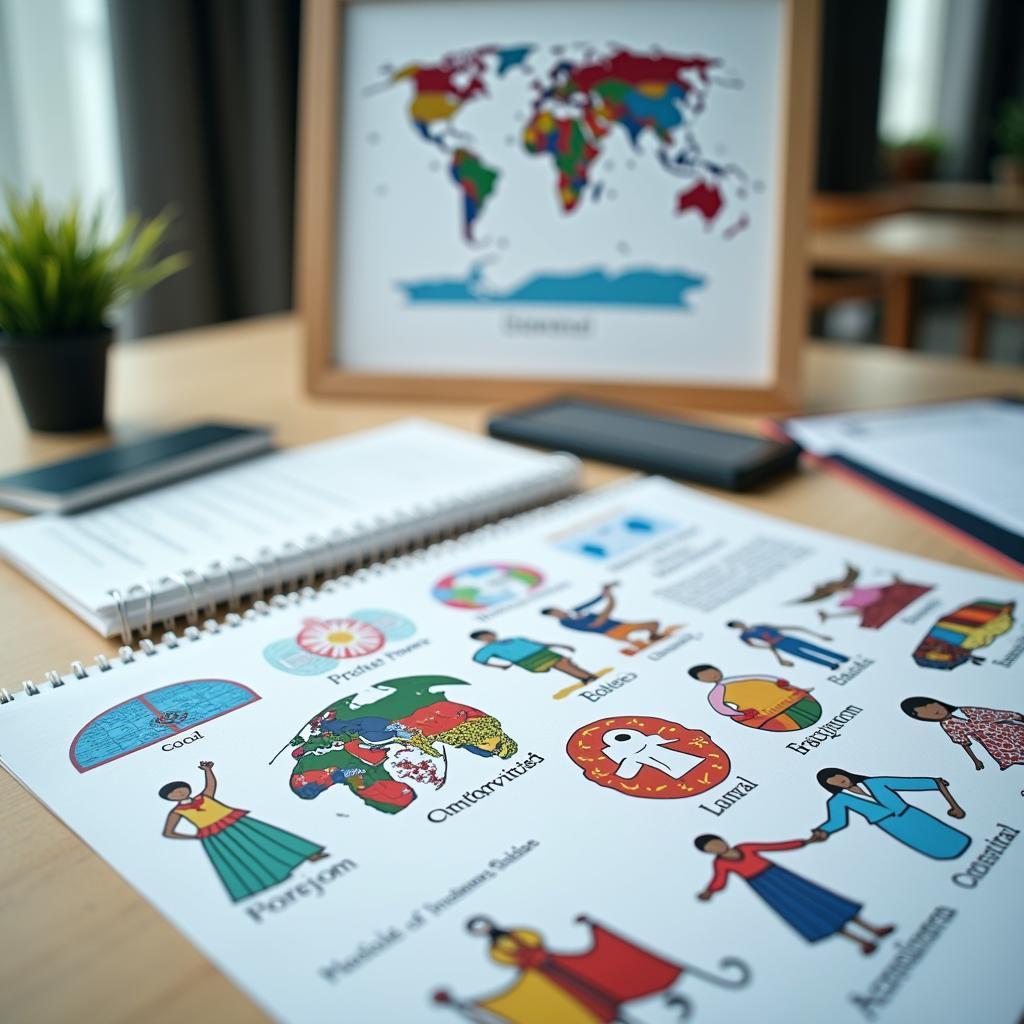The topic of global cultural policies has become increasingly relevant in IELTS Writing Task 2, appearing frequently in recent years. Similar to how global trade influences cultural exchange, this theme explores the intersection of culture, policy, and international relations. Based on analysis of past exams, questions about cultural policies often focus on preservation, integration, and standardization.
Table Of Contents
 The importance of cultural policies in modern global society
The importance of cultural policies in modern global society
Sample Question Analysis
Some people believe that governments should establish policies to preserve minority cultures, while others think that all cultures will naturally merge into one global culture. Discuss both views and give your opinion.
This question requires candidates to:
- Examine two contrasting perspectives on cultural preservation
- Consider the role of government intervention
- Evaluate the concept of cultural homogenization
- Present and justify a personal stance
Band 8-9 Sample Essay
In the era of globalization, the debate between cultural preservation and natural integration has become increasingly significant, similar to The challenges of managing global migration. While both perspectives have merit, I believe a balanced approach combining selective preservation with natural cultural evolution is optimal.
Government intervention in preserving minority cultures can be crucial for maintaining cultural diversity. Through targeted policies such as language protection programs, cultural heritage funding, and educational initiatives, authorities can safeguard valuable traditions that might otherwise disappear. For instance, New Zealand’s successful efforts to revitalize the Maori language demonstrate how governmental support can effectively preserve indigenous culture.
Conversely, proponents of natural cultural merger argue that globalization inevitably leads to cultural blending. Digital connectivity and increased international mobility have accelerated cultural exchange, creating fusion in music, cuisine, and lifestyle practices. This natural evolution can enrich societies by combining the best elements of different cultures, as evidenced by the global popularity of fusion cuisine and cross-cultural artistic expressions.
In my view, while some degree of cultural mixing is inevitable and beneficial, complete homogenization would represent a significant loss to humanity’s collective heritage. The optimal approach involves strategic government intervention to protect essential cultural elements while allowing natural cultural evolution to occur. This balanced strategy can ensure both the preservation of unique cultural identities and the benefits of cultural exchange.
Band 6-7 Sample Essay
Today, there is much discussion about whether governments should protect minority cultures or let them naturally combine into one global culture. This issue relates to The benefits of inclusive workplace policies in our modern world.
Those who support government protection of minority cultures have some good points. First, these cultures have unique traditions and languages that could be lost forever without help. For example, many small communities in Asia are losing their traditional customs because young people prefer modern lifestyles. Also, when governments help protect cultures, it helps maintain diversity in our world.
On the other hand, some people think cultures will naturally mix together. They believe that with the internet and travel, people from different cultures share ideas and habits naturally. This has already happened with food, music, and fashion, where we can see many different cultures influencing each other.
In my opinion, both sides have valid arguments, but I think some government protection is necessary. While cultural mixing is natural and good, we should not let minority cultures disappear completely. Governments should help preserve important traditions while allowing natural cultural exchange to happen.
Key Vocabulary
- Cultural homogenization (n) /ˌhoʊmədʒənaɪˈzeɪʃən/ – The process of becoming uniform across cultures
- Indigenous (adj) /ɪnˈdɪdʒɪnəs/ – Native to a particular region
- Revitalize (v) /ˌriːˈvaɪtəlaɪz/ – To give new life or vigor to
- Cultural heritage (n) /ˈkʌltʃərəl ˈherɪtɪdʒ/ – Traditions passed down from previous generations
- Fusion (n) /ˈfjuːʒən/ – The process of combining different elements
Looking Forward
Future IELTS questions might explore:
- The impact of digital technology on cultural preservation
- The role of education in maintaining cultural identity
- Economic aspects of cultural policy implementation
Practice writing your own essay on this topic and share it in the comments for feedback and discussion.


